How do you draw Napoleon? With a Napoleon hat! How do you draw a grandfather? With a beard and a stick! How do you draw a queen? With a cloak and wand! If we think about it a bit, we will realize that not all queens have a scepter, that Napoleon did not always wear a hat, and it is not certain that your grandfather has a beard and a cane. So how did these images get fixed in our heads?
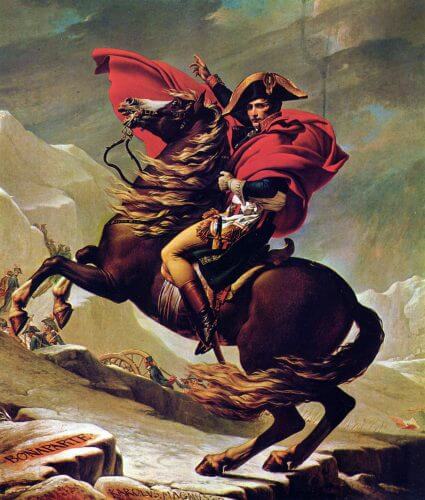
Article: Tamar Jordani, Young Galileo
If you were asked to draw a queen, you would probably draw a distinguished lady with a cloak, a scepter and an impressive golden crown. But when you look at the pictures of Elizabeth II, Queen of England, for example, you don't find all these items. She seems a fairly ordinary woman, perhaps a little more elegant than the average great-grandmother.
Another example can be found in Sherlock Holmes - who is a completely imaginary character, but it is likely that you would draw the famous literary detective as a serious character with a detective hat and a pipe in his mouth.
From that place, most people will draw an old man with a cane, a housewife with an apron, and Rapunzel with a long braid - although old men don't always have a cane, many housewives don't have an apron, and no one has actually met Rapunzel...
Sun on the head
The use of a permanent distinguishing mark (an accessory or a physical characteristic) in a painting or sculpture so that the viewer knows exactly who is meant, has a long history in figurative art. There are simple hallmarks of professionals, such as a beret on the head for a soldier, a hammer for a carpenter or a long beard and black hat for a rabbi. There are famous people who have a well-known trademark attached to them, such as Jesus who is always depicted with long hair and a beard, and Napoleon who always wears a "Napoleon hat". This is not to say that Napoleon always wore a hat, and we really have no idea what the length of Christ's hair was, but these hallmarks help us easily identify who the artist was referring to.
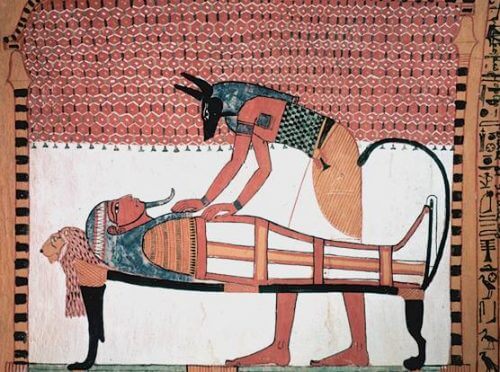
Already the ancient Egyptians used the system of hallmarks to ensure that viewers would easily recognize who the god they painted or sculpted was. They established clear and accepted hallmarks, and thus every Egyptian child knew that if a god has a jackal's face, it is Onubis, the god of death; Those with a huge sun disk on the head held between the horns of a cow is Hathor, the goddess of beauty and love; And the god with the feathers or the bird on his head is Shu, the god of wind and air.
Snake on a stick
The Greeks adopted the method and chose hallmarks for the dozens of gods in their mythology. The leader of the gods, Zeus, is described as an angry man with a white beard, long hair and lightning in his hand, since the ancient Greeks believed that lightning and thunder were an expression of Zeus' anger; The goddess of fortune Tyche is depicted with a crown made of a city wall because she was considered the protector of cities; Pan, the god of shepherds and music, was given the horns and feet of a goat, and sometimes you will find him playing a special flute, that is "Pan's flute"; The god of medicine Asclepius usually leans on a staff with a snake wrapped around it.
The distinguishing mark of Asclepius is perhaps related to the special feature of the snake to shed its skin, like a person who is cured of a serious illness and starts his life anew. It seems that this hallmark is based on an ancient myth that is even mentioned in the Bible, according to which Moses healed the people of Israel and stopped a severe plague with the help of a snake on a stick, as described in the book in the desert: Everyone who has bitten and saw him and lived" (in the Wilderness, chapter XNUMX, verse XNUMX). This hallmark of Asclepius became the symbol of medicine, and it is still remembered today on medicines and pharmacy symbols.
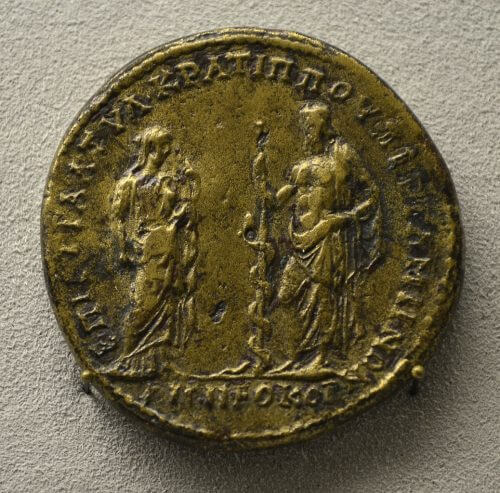
The gods in Roman mythology also abound with hallmarks. Jupiter, the Roman counterpart to Zeus, holds lightning in his hand - like his Greek counterpart, and Jupiter is also accompanied by an eagle; Diana, the goddess of nature and the hunt, is usually remembered with hunters' boots on her feet, and is accompanied by a hunting dog or a deer; Neptune, god of the sea, is a copy of his Greek counterpart Poseidon, and both have a three-pronged pitchfork (trident); And most of the times the question of victory Victoria is remembered - on her back is a pair of wings, and in her hand is a wreath of victory for the warriors who returned proudly from the battlefield.
holes in the hands
When the Roman Empire became Christian about 1,700 years ago and the Byzantine period began, the Roman gods were thrown into the dustbin of history, and the new heroes were the only God as well as Jesus and his disciples. As mentioned, Jesus was presented as a young man with a beard and long hair, and another distinguishing mark of him is holes in his palms, which allude to his nailing to the cross.
You will recognize Peter his disciple by the bunch of keys in his hand. This trademark was born as a result of Jesus' promise to Peter, which is given in the New Testament: "I will give you the keys of the kingdom of heaven, and whatever you forbid on earth will be forbidden in heaven, and whatever you allow on heaven It will be permitted in heaven" (The Gospel according to Matthew, chapter XNUMX, verse XNUMX). Paul, another disciple of Jesus, is often remembered holding a long sword, which symbolizes his death as a martyr.
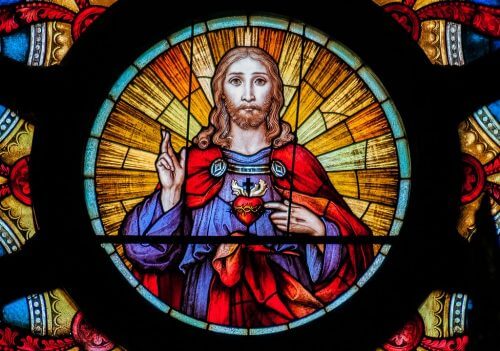
Zechariah, the father of Yochanan the Baptist, who is a central figure in Christianity, is told in the New Testament that he was a priest and served in the Temple, and for this reason his distinguishing mark is the breastplate that was placed on the high priest's chest. Although it is not written that Zechariah was a high priest, it is difficult to describe a successful hallmark from a breastplate to describe priests.
Elisheva his wife was awarded a disgusting hallmark - to be an old woman; Because in the New Testament it is written that she conceived Yochanan at an extreme age, just like Sarah our mother.
took his head in his hands
In medieval Europe, the majority of the public was illiterate. The language of prayer was then Latin, which most of the audience did not understand, and therefore the visit to the church could be quite boring. To attract the crowd, the churches were decorated with an abundance of eye-catching paintings and sculptures, including a figure from the New Testament as well as figures from the history of later Christianity, which received their own hallmarks.
Let us mention, for example, Saint Dionysius (in French: Saint Denis), who was the first bishop of Paris, about 1,800 years ago. This was before Christianity became an important religion, so when it became clear to the governor of Paris that Dionysius was converting the inhabitants of the city to Christianity - he got angry and cut off his head. According to Christian tradition, Dionysius stood up, took his head in his hands, and walked several kilometers until he collapsed. In the place where this happened, the Basilica of Saint Denis was later built, where most of the kings of France were buried, and from then until today, the image of the poor bishop is depicted in many churches with his beheaded head in his hands.
The designers of the churches in the Middle Ages wanted to teach the believers that Christianity is superior to Judaism. Thus two non-human figures were born: ekklesia - which symbolized the church, and synagogue - the synagogue. These figures, depicted in paintings and sculptures in hundreds of churches, are depicted as two women with distinct hallmarks: the upright Ecclesia holds in her hands a cross and a magnificent goblet of wine and a crown on her head, and Synagogue stands bent over, in her hands a broken staff and the tablets of the covenant upside down. The crown on her head falls or is literally thrown on the floor, and her eyes are covered with a handkerchief, as if she were blind.
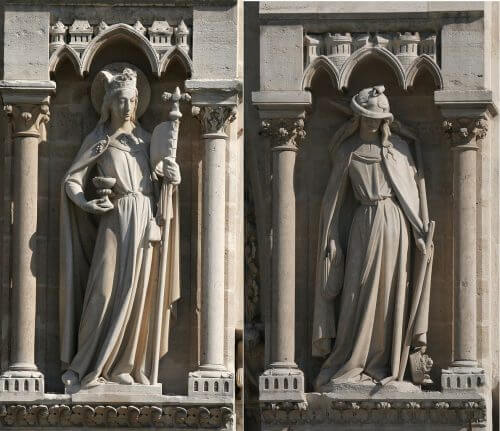
Judaism did not provide an adequate response to this irritating image, for the reason that the Jews (and the Muslims following them) distanced themselves from figurative art, due to the explicit prohibition in the Ten Commandments: "You shall not make for yourself a graven image or any likeness" (Exodus, chapter XNUMX, verse XNUMX).
The commandment was intended to keep away from foreign worship, but it was accepted in Judaism as it was, and therefore we have no distinguishing marks for the figures - because we do not have a tradition of painted and sculpted figures. Therefore, if they ask you to draw Moses, you will most likely draw him wearing a robe, leather sandals, and perhaps with a turban on his head. This description would also be very suitable for Samuel the prophet or Abraham our father for example.
The Christians, who painted quite a few biblical figures, attached logical hallmarks to Moses such as the tablets of the covenant or a shepherd's staff, but the renowned artist Michelangelo added a very strange hallmark to him: horns on his head! It is likely that the origin of this ridiculous trademark is a careless translation of the description of Moses after the Mount Sinai situation in the Torah: "And Aaron and all the children of Israel saw Moses, and behold a horn of his face" (Exodus, chapter XNUMX, verse XNUMX).
What about Ruth the Moabite? It is likely that you will also draw her with a cloak, leather sandals and maybe with a scarf on her head, just like you would draw Rachel our mother or Deborah the prophetess. Various artists characterized Ruth the Moabite with her own distinguishing mark: a woman holding corns, according to what is told about her in the scroll of Ruth.
Nowadays, cartoonists often use hallmarks, and therefore a slightly shorter president will be drawn as a dwarf, a prime minister with a slightly longer nose will become Pinocchio, and the figure of "Uncle Sam" with a hat made of the United States flag symbolizes everything that is American. And our own example: a boy with a fool's hat conceived by the cartoonist Dosh (Kriel Gardosh) is considered a symbol of Israeliness.
And we will end with a small personal task: if you were asked to draw yourself, what do you think would be the hallmark that would characterize you?
The article was published in Young Galileo - the monthly for curious children. For a gift digital sheet Click

5 תגובות
Thanks to Zaffir and Yehuda for the information.
Yehuda, the day you wrote your comment I was with my grandchildren in the Tel Aviv Museum and I took a picture of a painting painted by Friedrich von Valkenbruch about 400 years ago. The snake, as expected, has no legs. Eve actually does not have a navel in the designated place, but Adam has a navel, and he shouldn't have one either. https://profile.fcdn.co.il/images/0__059968cc8d16b0.jpg
Sabdarimish - great!
Yossi: An apple is a bad fruit: in Latin both the word apple and the word bad are written as Malum:
https://la.wikipedia.org/wiki/Malum_(discretiva)
If anything, the biggest mistake is the corkscrew that appears in the belly of Eve in medieval paintings, and Eve was created by God from a human rib and was not attached to any mother as a fetus.
And if a snake is already mentioned here, it is worth mentioning that over 99% of the paintings depicting the snake tempt Eve to convince Adam to eat from the tree of knowledge, the snake is already without legs even though he received this punishment only after the event (who even decided that the fruit of the tree of knowledge is an apple? Probably when they started To paint - it was the most precious fruit...).